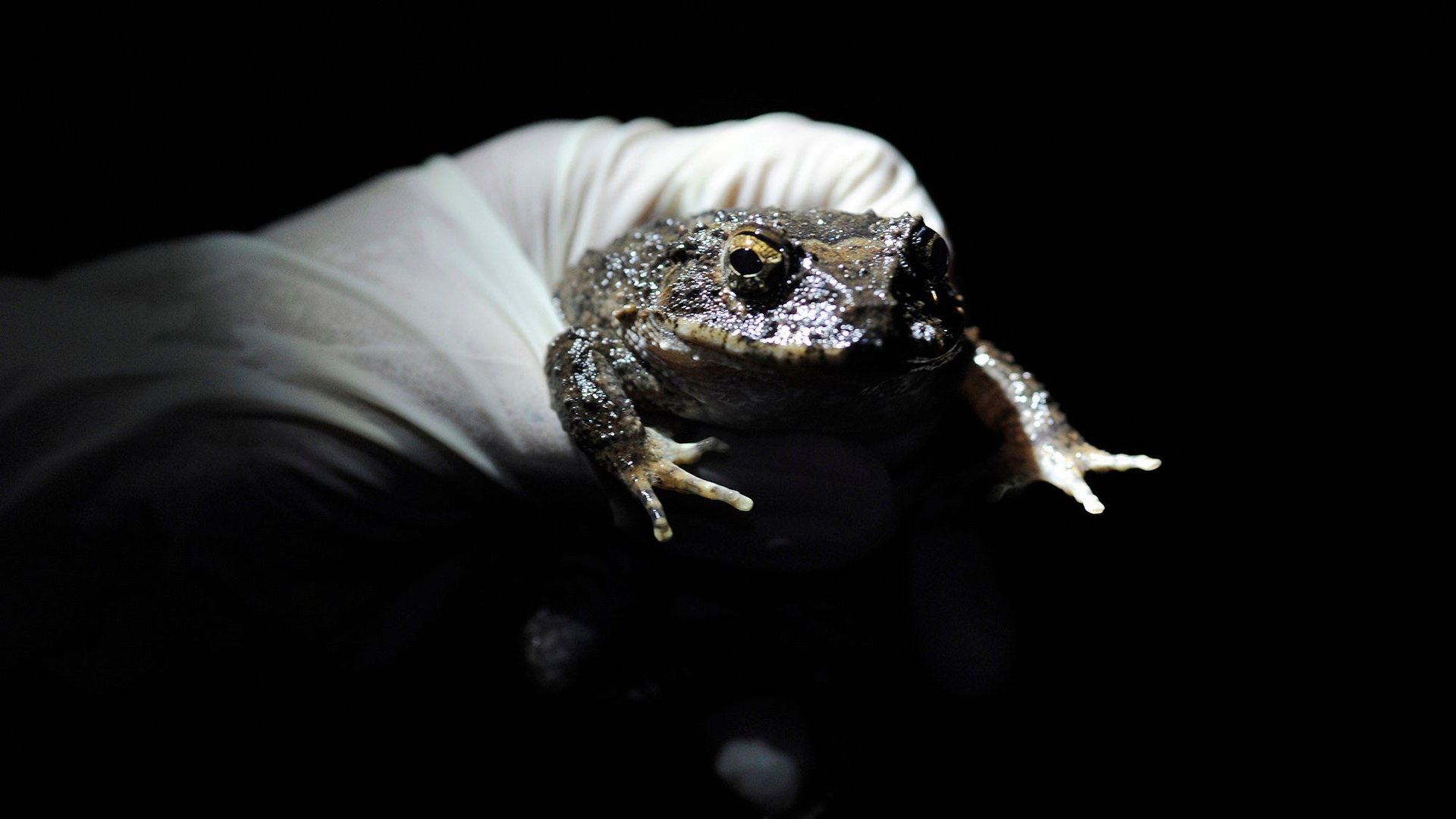A killer fungus is decimating the world’s frogs—but there might be some ways to stop it
In the amphibian world, all hell’s broken loose. In the last two decades, a killer fungus has been decimating frog populations across the world. It has been found in 700 species on six continents. Many of these frogs are keystone species—on a par with corals and bees—and without them a whole host of other species won’t survive.


In the amphibian world, all hell’s broken loose. In the last two decades, a killer fungus has been decimating frog populations across the world. It has been found in 700 species on six continents. Many of these frogs are keystone species—on a par with corals and bees—and without them a whole host of other species won’t survive.
So far, the quick rise of chytridiomycosis—the disease that chytrid fungus causes—has been baffling. There are some 1,000 species of chytrid fungus, but only two infect living vertebrates (most feed on dead matter). Nothing scientists have tried has been able to control the spread of the fungus in the wild or reduce the death count of frogs. Until now.
A new study in Majorca, off the coast of Spain, offers some hope. After six years of trying and a great deal of effort, a group of researchers has for the first time reported eradicating chytrid fungus in the wild.
In 2009, the research team collected tadpoles from five ponds, and treated them with the antifungal drug itraconazole. They then drained the ponds, and hoped that chytrid fungus would be killed by the sun’s heat. They let rain refill the ponds, and returned the treated tadpoles a few months later.
Sadly, less than a year later, the fungus was back. One explanation was that some adults, which were still carrying the fungus and had escaped capture, must have re-seeded the ponds.
Not to be dissuaded, the research team tried again in 2012. This time they didn’t just treat the tadpoles with antifungals and drain the ponds; they also treated some ponds with Virkon S, an agricultural disinfectant. They were careful to spray every nook and cranny. This time, the fungus didn’t return to the ponds when the tadpoles did, and the situation remains stable two years on.
Sadly, the Majorca study was in many ways an exception rather than the norm. Few amphibian habitats are as neatly isolated as on the Spanish island. Though the experiment was cheap and seems reliable, it would be hard to apply to all the areas that chytrid lurks in.
Scientists are trying other methods. A lab in at the University of Massachusetts in Boston is developing probiotic therapy, where beneficial microbes can be introduced to fight the fungus. But the treatment has not yet been shown to work.
There are other hopeful stories. In early 2015, chytrid fungus was found on Madagascar, which has one of the world’s highest levels of amphibian biodiversity. Many were worried about what might happen to frogs on the island.
But, fortunately, the rate of infection among frogs was extremely low and there was nearly no sign of chytridiomycosis. So the frogs got the fungus, but didn’t catch the disease. Scientists are now trying to find out if these frogs have some sort of chytrid resistance, which could be offered to other frogs around the world.
One way or another, scientists need to act fast. Another species of chytrid fungus has been found infecting and killing salamanders and newts in great numbers in Germany and the UK.